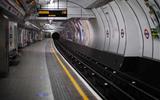The current round of emergency funding for Transport for London (TfL) is set to expire on 4 February. While talks are still ongoing between the central government and the mayor of London, Sadiq Khan, for further financial assistance, the capital’s transport agency has warned that if this does not come to fruition, it will have to nurse a "managed decline" in order to drastically reduce costs.
So far, during the pandemic, TfL has received more than £4 billion worth of emergency funding from the central government. However, TfL estimates it requires a further £245 million in the current financial year and £1.1bn in the 2022-23 financial year in order to stay afloat.
A report published by TfL’s finance committee in December laid bare the implications for motorists if a "managed decline" is introduced.
For Autocar Business webinars and podcasts, visit Autocar Business Insight
"Moving to managed decline on enhancements would mean that only projects already under way or those required to be compliant with safety and other statutory regulations would continue – meaning no new investment by TfL at all in the transport network. Major outcome areas for TfL would be impacted, with no proactive progress towards safety improvements, decarbonisation, improving air quality or active travel,” it said. "Any schemes which progress air quality improvements beyond the ULEZ, including the mayor’s Air Quality Fund and electrification of TfL’s vehicles, would be stopped."
The report added: "The road network would continue to decline, leading to more restrictions and closures. Such assets at risk of closure include Rotherhithe Tunnel and Gallows Corner. Restrictions and closures [would be] highly likely – creating congestion on the rest of the road network, which will worsen safety outcomes, and disrupt freight and deliveries as well as affecting bus performance/costs."
Since March 2020, TfL’s main revenue stream – income from underground and bus passengers – has collapsed due to far fewer passengers using its services since the first national ‘stay at home’ message was imposed. During that month, tube usage fell to a low of just 4% of an equivalent day in 2019 and fluctuated for the rest of the year, recovering to only around 40%.
Even now, the number of people using its services is far below pre-pandemic levels. Data for 24 January 2022 shows underground ridership was at 49% of an equivalent day in 2019 and bus ridership has only recovered to 72%.
Before the pandemic took hold, around 72% of TfL’s total income was derived from fare revenues, and its financial situation is made worse as London is one of the few capital cities in the world that doesn't receive funding from the central government to support its operating costs, after a £700m-per-year grant was axed in 2015 by then-chancellor George Osbourne and Boris Johnson, who was London mayor at the time.

















Join the debate
Add your comment
Sounds politically driven. When they are struggling to fund 'levelling up', pumping money into London is a vote loser, even if it is the right thing to do. This government doesn't care about 'the right thing', only the number of votes.
I absolutely agree with you on the smaller towns situations. When I was younger, I worked in a town about 12 miles away and it took about half an hour. When I had an accident (hit black ice), it was going to take 3 different buses and 2 hours to get to work on time. We're not even talking like out in the sticks places, central belt of Scotland and not far from Edinburgh.
Its London, it will get what it wants. Always will.
However, I think TfL really do need to restructure how it works, as do most public transport bodies. Businesses are always looking at ways of reducing overheads, and office space is one of their biggest ones. If they can have more of their employees work from home, or only come in a few days a month, while still having a productive workforce, why would they not go fir it? It isn't for every job, but I know plenty who now permenantly working from home, or only going in 2 days a month.
What that means is a lot less demand for the public transport, which will reduce the income available. Someone is going to have to pay for it, and it will sadly be those who rely on it the most, like the lower income earners as well as the tax payer.